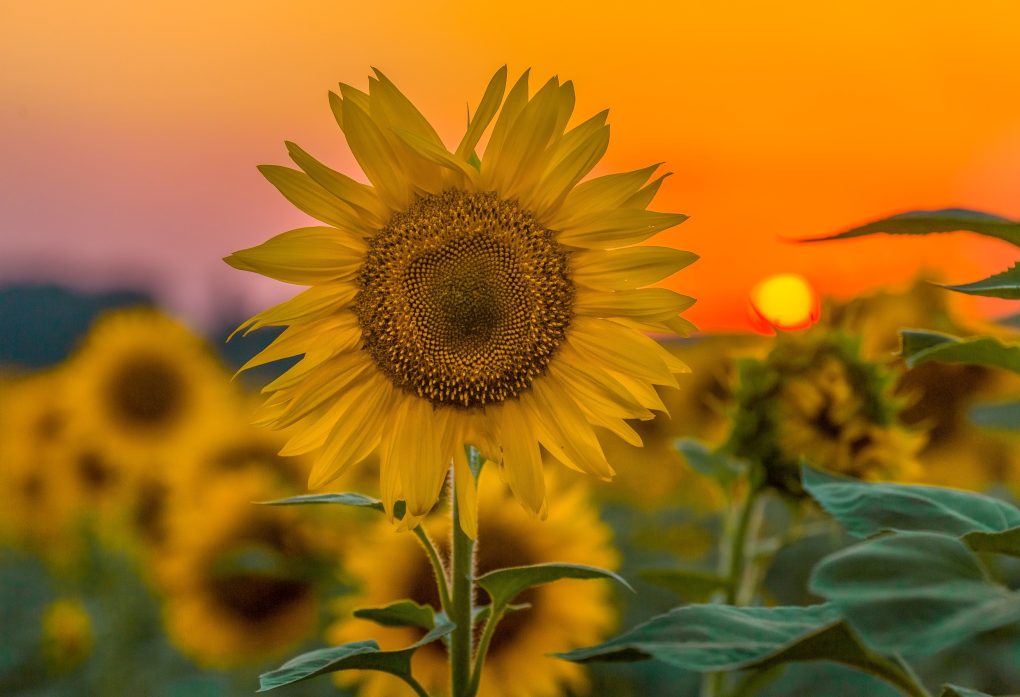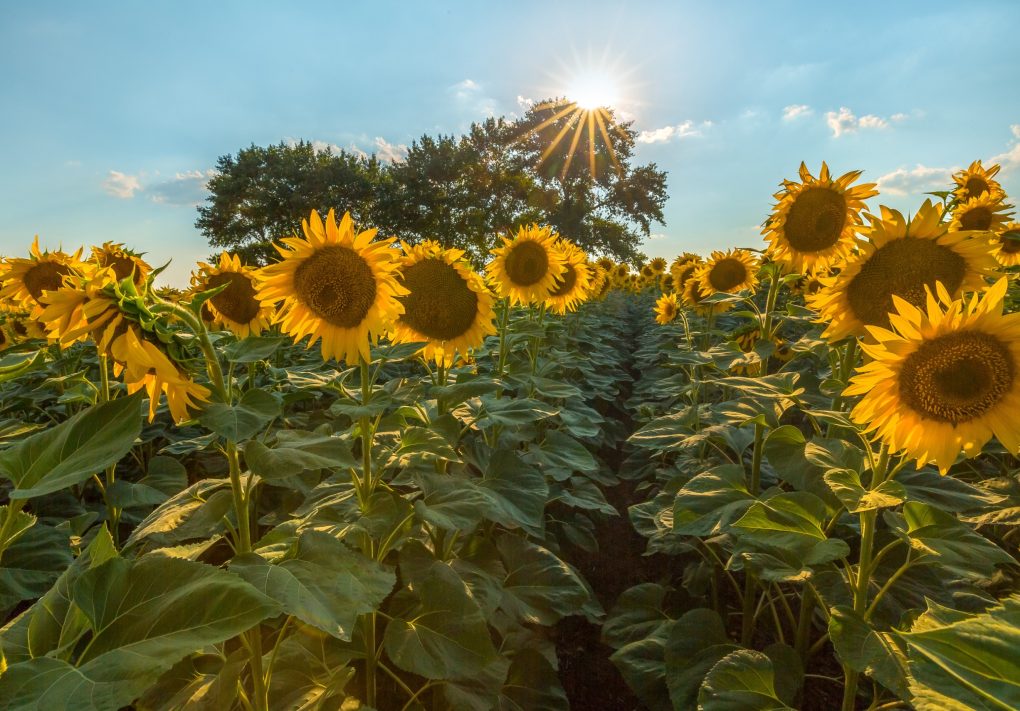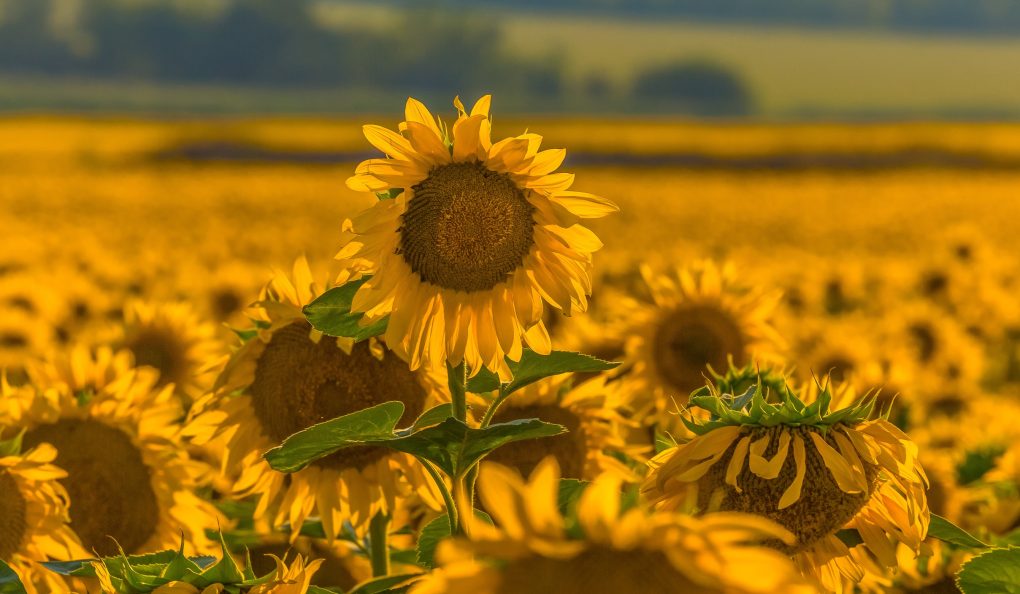Where Do Sunflower Seeds Come From? Notable Facts About Sunflower Seeds
After the flower has flowered and faded back, sunflower seeds are gathered. The sunflower’s seeds are ready for harvesting when the back of the head changes color from green to yellow to brown. Sunflowers typically bloom 70 days after planting, but it takes another month for the seeds to be ready for harvest. Just a little more than three months pass between planting seeds and storing them in our cupboard.

Sunflower, the seed of sunflower, is often seen as a snack, but it does more than satisfy your cravings for food. The sunflower seed is unique in that, unlike most seeds, it is edible and offers numerous nutritional benefits. From sunflower seed oil to sunflower seed butter, sunflower seed is used in many beauty products. Besides oil, sunflower seed also carries several health benefits, such as high protein content and antioxidants that boost immune system function. However, knowing the origin of the sunflower seed can be interesting. Without further ado, let’s find out where sunflower seeds come from and how they are harvested.
Table of Contents
Notable Facts About Sunflower Seeds
- Humans have used sunflower seeds for thousands of years. It is believed that sunflower seeds were first grown agriculturally in Mexico and the southern United States.
- Sunflower oil can be extracted from sunflower seeds and used for cooking. Sunflower oil has a high ratio of polyunsaturated to saturated fat (a healthy fat), making it a great source of vitamin E and carotenoids. These nutrients promote eye health and can help prevent chronic diseases.
- Sunflower seeds are harvested after about 120 days, dried, roasted, salted, and packaged for consumption. The top sunflower-growing countries in the world are Ukraine, Russia, Argentina, China, and Romania. They all have sunny climates with plenty of sunshine and fertile soil.
- Sunflowers are known for their bright yellow flowers and sturdy plants that produce edible seeds year-round. They’re easy to grow and don’t require much effort to harvest sunflower seed crops. You can start harvesting sunflower seed crops anytime during the season as long as you avoid freezing temperatures.
How are Sunflower Seeds Grown?
Around the world, sunflowers are grown in a variety of locations. Depending on the species and region, they are typically planted in the summer or the first few weeks of the fall. After roughly 120 days, sunflower seeds are gathered, dried, roasted, salted, and packed. The sunflower plant is a tall annual with either white or bright yellow flowers.
Sunflower plants need warm weather and sun to flourish. They grow well in full sun, warm weather, and wind-protected locations with the soil of pH 6.0-7.5. The soil should be well-drained and not too sandy or rocky. The sunflower seed should be planted 1 inch deep and 4-6 inches apart. Larger types should be trimmed to approximately 2 feet apart, and rows should be 30 inches apart to promote strong growth and minimize interference from other plants.
The sunflower batter can be harvested when the seed heads begin to turn brown and drop seeds. Once the seed head is brown and dry, it can be picked off the stalk and stored for later use or consumption by animals or birds.
When to Harvest Sunflower Seeds
Sunflower seeds can be harvested when most petals have fallen and the back of the flower head has changed from green to dry and brown. This indicates that sunflower seeds have been fully developed and are ready for harvesting. In some sunflower-growing regions, sunflower seeds may be available in late summer or early fall, making them an ideal snack food during the year’s warm months.
Although sunflower seeds are commonly available in stores, they are usually harvested from sunflower farms, where they are grown specifically for consumption. This allows farmers to control the timing and harvesting of sunflower seeds. Depending on where you live, sunflower seeds may be available one month after the flower blooms and can be stored for several months once harvested.
How to Harvest Sunflower Seeds

Cutting
Sunflower stalks can be cut about one foot down from the flower head using sharp scissors or pruners.
The sunflower stalks should be cut when fully ripe and the sunflower seeds inside begin to brown.
It is necessary to cut the stalks to harvest the sunflower seeds. If you don’t, the sunflower plants will continue making new flowers and seeds, which could result in poor-quality sunflower seeds.
Cut the sunflower stalks when ready and hang them indoors to dry. Once the sunflower seeds have turned brown, it is time to harvest them. You can do this by hand or with a mechanical harvesting device, such as a machine with blades or a sickle.
Sunflower seeds will be ready to harvest approximately 30 days after pollination. When harvesting sunflower seeds, ensure you get as many sunflower seeds as possible without damaging the plant or harvesting too many sunflower plants too quickly.
Hanging To Dry
After sunflower seeds have dried for about four weeks, they are ready to harvest. To do so:
- Hang sunflower seeds by string or wire fence around the top of the tree.
- Make sure the wind doesn’t blow the seeds away, as this will reduce their fertility and quality.
- Once the sunflowers are harvested, remove the male flowers by hand or using a weed eater.
After harvesting, sunflower seeds can be used in various ways, including sprinkling them on salads or cooking with them. Sunflower seedlings are a great source of protein and vitamin A for farmers and hobbyists.
Removing The Seeds
Sunflower seeds can be harvested from sunflower plants in a variety of ways. The easiest way is to remove the sunflower seeds after the bloom dies and the sunflower head turns brown. This can be done by firmly rubbing the seeds’ heads over a bucket to catch the seeds. After removing the sunflower head, it should be dried completely and stored upside down in a bag.
The harvesting process involves:
- Cutting the sunflower stalk.
- Storing the head upside down in a dry and breathable bag.
- Removing the seeds.
Sunflower seeds should be ready to harvest 110 to 125 days after the sunflower is planted. This will depend on factors such as weather conditions and sunlight exposure.
Sunflower heads can be harvested throughout the growing season, but they are best when fully ripe. It is ideal for sunflower seeds to be picked at this stage because they are more uniform in size and have developed a brighter color. Harvesting sunflower heads too early or too late could result in less desirable characteristics, such as uneven ripening or short shelf life.
Sunflower seeds are high in dietary fiber, vitamin A, vitamin B1 (thiamin), vitamin B2 (riboflavin), vitamin B6, folate, potassium, calcium, magnesium, phosphorus, iron, zinc, carotenoids, antioxidants vitamins C and E, as well as proteins and essential fatty acids. They are also low in fat and calories but provide many nutrients per serving size.
Where Do Sunflowers Originate From?
Sunflowers (Helianthus annuus) originate from the jungles of North America. They were first domesticated by Native American tribes in the region up to 4,500 years ago and were brought to Europe in 1510 by Spanish explorers. However, sunflower cultivation became a major food crop in the late 1800s when Russian farmers began growing it for its oil and seeds. Sunflower cultivation has since spread throughout Europe, Russia, and Ukraine due to its high yield and nutritional value.
Though sunflower seeds are popular worldwide, they can be difficult to grow. They require warm temperatures, ample sunlight, and fertile soil to flourish. Sunflower seeds are also popular for their nutritional value, which makes them a great snack option for people of all ages.
According to the United Nations, Ukraine and Russia produce more than half of the worldwide supply of sunflower oil and seed. The Ukrainian conflict is projected to harm current-season manufacturing and the supply chain due to a lack of access to seaports. Excessively dry weather might impact other critical sunflower-growing areas in addition to the war’s disruption. Sunflowers are only one example of how the global food supply network is more entangled and reliant than ever. Other areas are impacted by volatility in one area.
Uses Of Sunflower Seeds
Sunflower seed has been used for centuries as a source of food, oil, and dye. Its flour can be used to make bread, cakes, and pasta. The oil can be extracted and used for cooking. Sunflower variants produce tuberous growths, which can be eaten and used for future plantings. Sunflower seed was used as sunscreen and a purple dye for skin, hair, or textile decoration. Its oil and pigments were also used medicinally as an anti-inflammatory. In addition to its uses as a dietary staple, sunflower is important ecologically due to its role in litter decomposition and suppressing invasive species.
Cultivation Of Sunflower

Sunflowers are native to the plains of North America and were first cultivated for flour and oil by Native Americans up to 4,500 years ago. Sunflower cultivation spread rapidly in the 20th century after it was introduced to Russia. The sunflower is a relatively easy-to-grow crop and can be planted directly in the soil at a spacing of 1.48 feet and 0.98 feet deep. It requires fertile and well-drained soil with a pH value of between 6.0 and 7.5, and sunflower seeds are planted from July through September when sunlight is plentiful.
Sunflowers grow best in areas where temperatures range between 55°F and 85°F for most of the year. Beyond that, sunflower seeds may not develop properly, so growers need to carefully monitor the weather conditions before harvesting sunflower seeds.
Sunflower seeds are technically classified as ‘Helianthus annulus and have a relatively short growing season, lasting from early spring through early fall. This means sunflower cultivation can only be done in certain parts of the world, with sunnier climates prevailing during this limited time.
Saving Sunflower Seeds
Sunflower seeds can be stored in a dry, cool place for a long time. Once opened, store sunflower seeds in a sealed container away from light and moisture. Use sunflower seeds to source protein, fiber, and healthy fats. They are versatile snack options that can be used in baking or as a healthy snack. Find recipes for sunflower seed snacks and meals on the internet to create tasty and nutritious dishes. Sunflower seeds offer a variety of healthy dietary benefits, making them a great addition to any diet.
